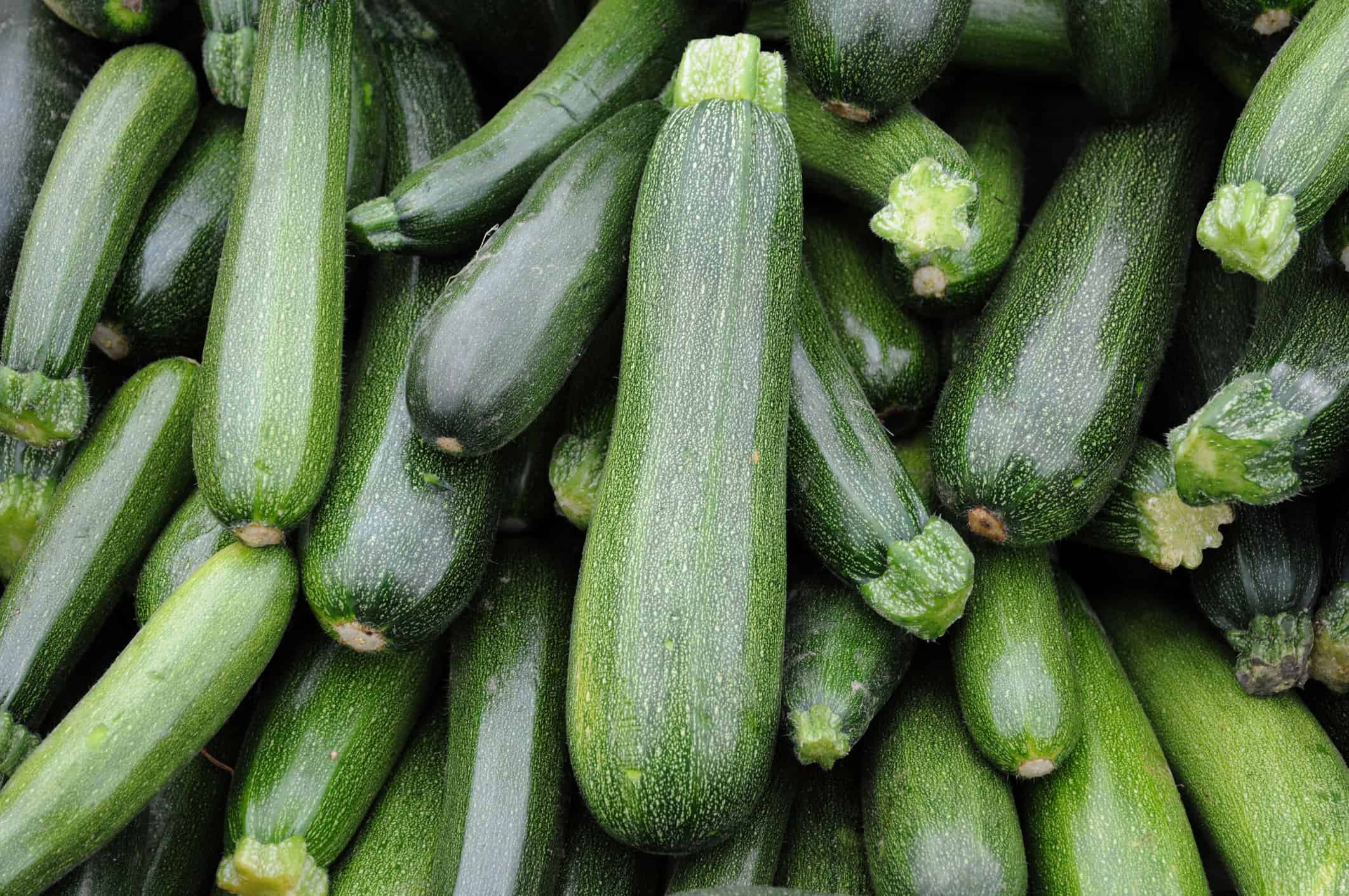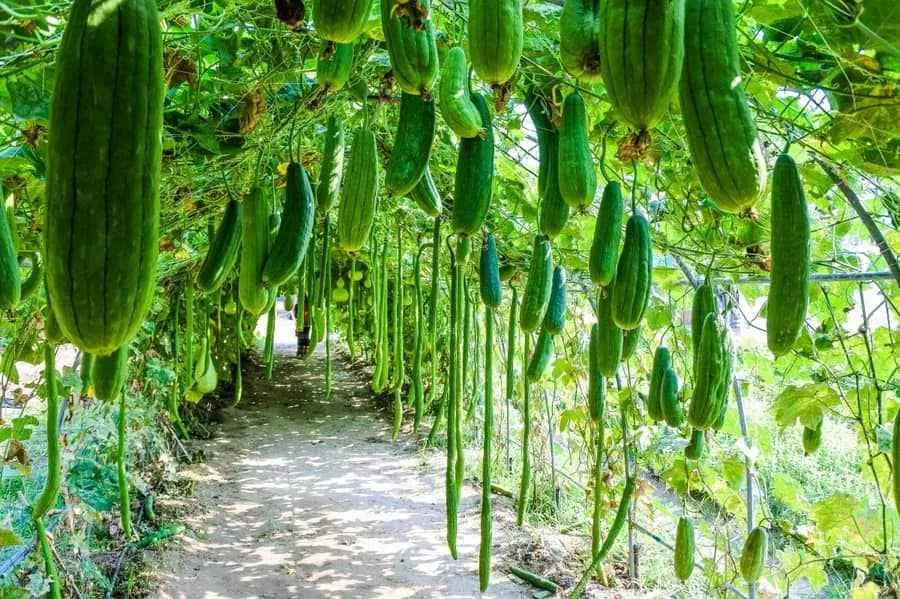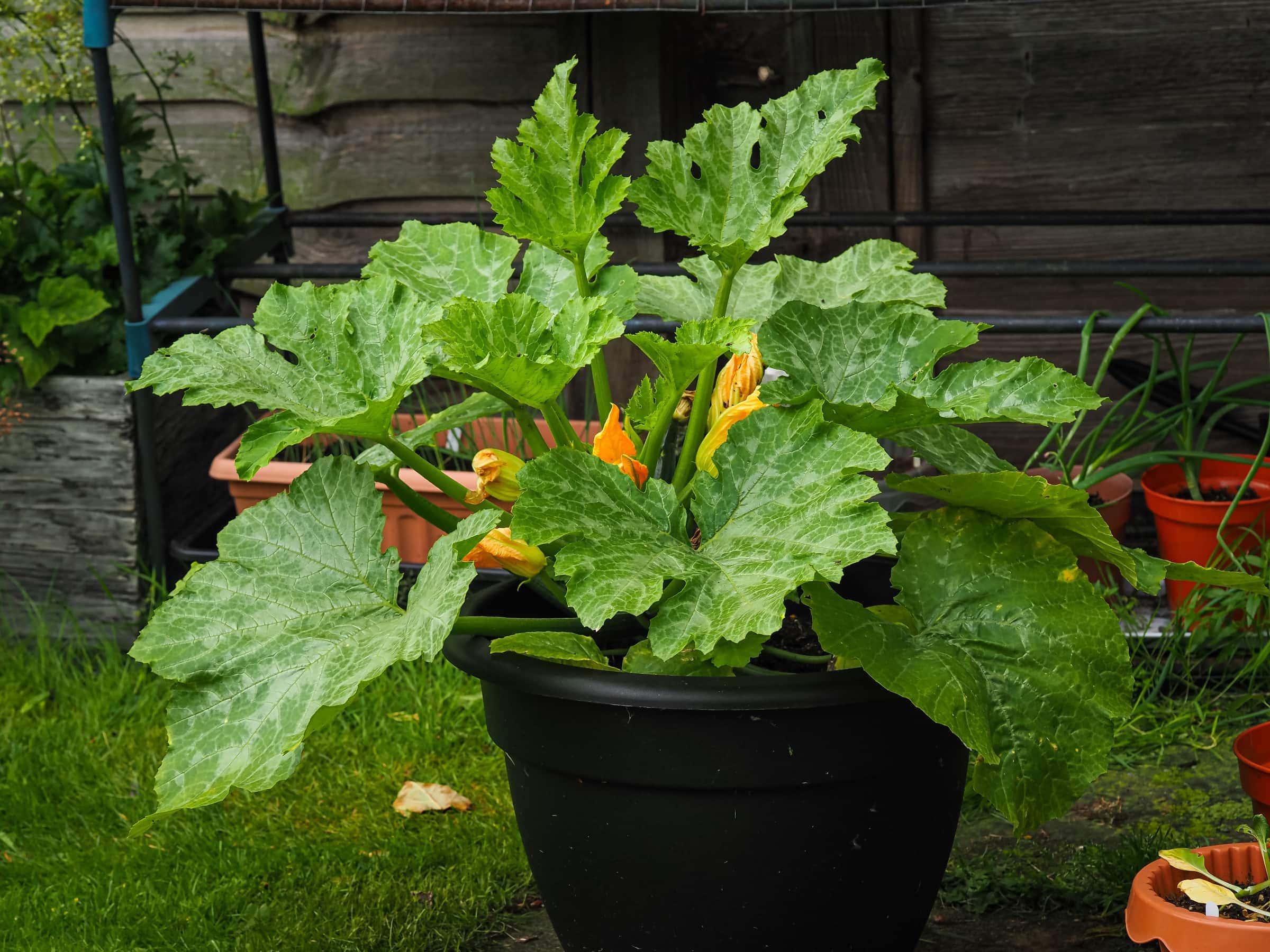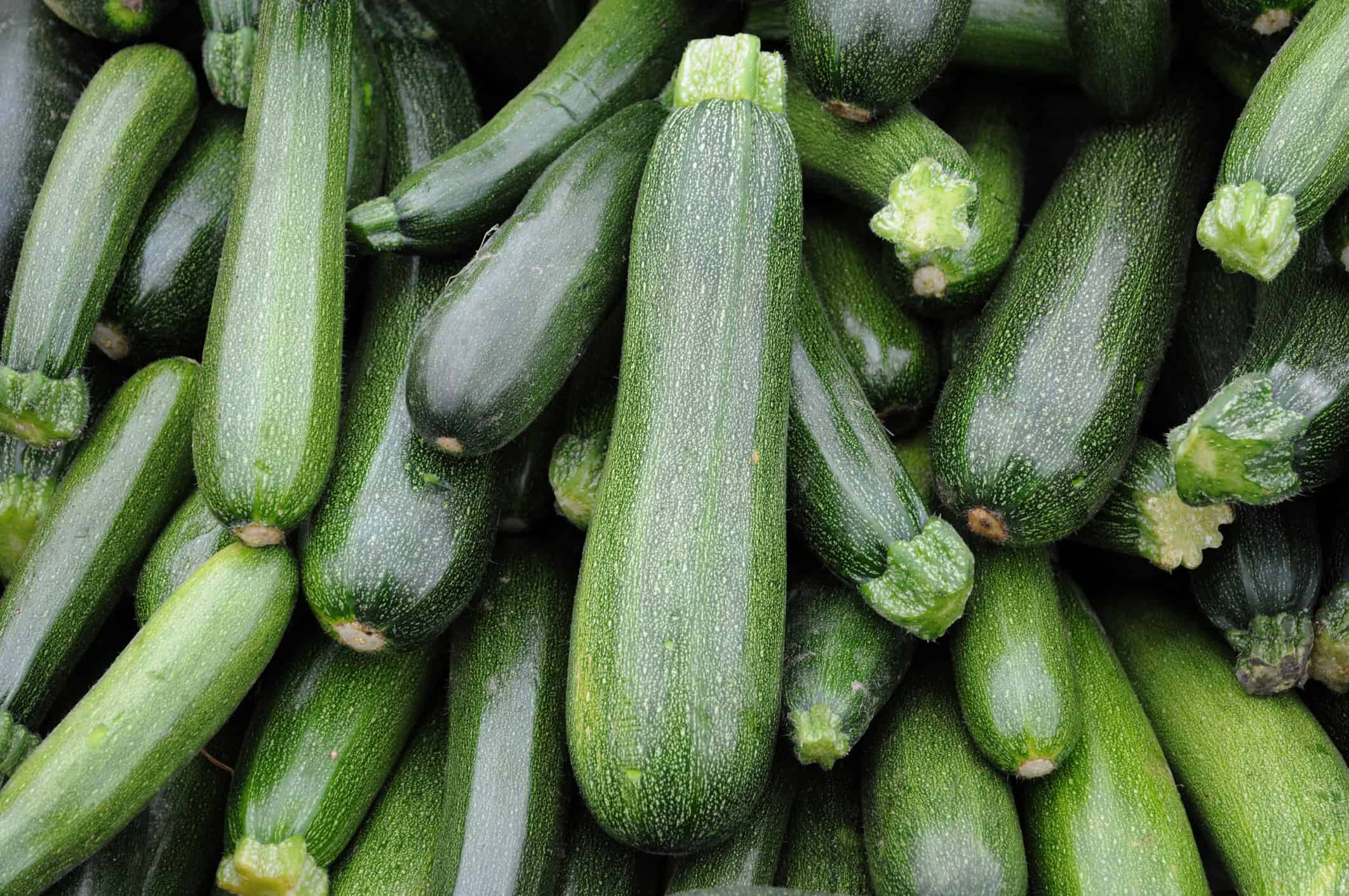Are you a passionate gardener who loves growing your own vegetables? If so, then you’re in for a treat with our latest article, “The Ultimate Guide: Supporting Zucchini Plants for a Bountiful Harvest.” In this comprehensive guide, we will walk you through the essential techniques on how to best support your zucchini plants, ensuring a flourishing harvest that will have your friends and family begging for more of those delicious zucchinis. So grab your gardening gloves and get ready to dive into the world of zucchini cultivation in this exciting article!
Choosing the Right Support for Zucchini Plants
Understanding the Importance of Supporting Zucchini Plants
Supporting your zucchini plants is crucial for their growth and productivity. Zucchini plants have large, heavy fruit that can weigh down the branches, causing them to bend and potentially break. By providing proper support, you can prevent this damage and ensure that your plants can bear the weight of their fruit. Additionally, supporting zucchini plants helps to keep the fruit off the ground, reducing the risk of rot and pest damage. It also allows for better air circulation, which helps in preventing diseases.
Different Types of Supports for Zucchini Plants
When it comes to supporting zucchini plants, there are various options to choose from. One popular method is using trellises or stakes. These vertical supports allow the vine to grow upwards, saving space and making harvesting easier. Trellises can be made from wood, metal, or even bamboo, while stakes are typically wooden or metal poles. Another option is using cages or tomato cages. These cylindrical wire structures provide 360-degree support for the plant and are particularly useful for bushier zucchini varieties. Lastly, you can consider using slings or hammocks made of netting or fabric to cradle the fruit and support the branches. This method is especially beneficial for protecting the fruit from deformities and damage.
Factors to Consider when Selecting a Support
When choosing a support for your zucchini plants, there are some factors you should consider. Firstly, consider the variety of zucchini you are growing. Some varieties are more compact and bushy, while others have longer vines. This will determine the type and size of support you need. Secondly, think about the available space in your garden. If you have limited space, vertical supports like trellises or stakes are a better option as they utilize vertical space effectively. On the other hand, if you have ample space, cages or slings may provide a more convenient support system. Lastly, consider the overall aesthetics of your garden. Choose supports that blend well with the surrounding plants and enhance the overall visual appeal.
Preparing the Soil for Zucchini Plants
Soil Preparation Steps
Proper soil preparation is essential for the successful growth of zucchini plants. Start by clearing the area of any weeds or debris. Next, loosen the soil by gently tilling it to a depth of at least 8 inches. This will improve drainage and aeration. After tilling, remove any large rocks or clumps of soil. It is also advisable to incorporate organic matter such as compost or well-rotted manure into the soil. This will enrich it with essential nutrients and improve its moisture-holding capacity. Lastly, smooth out the soil surface using a rake to create a level planting bed.
Recommended Soil Amendments for Zucchini Plants
Zucchini plants thrive in well-draining soil that is rich in organic matter. To achieve this, consider adding some soil amendments. One common amendment is compost, which adds organic matter, improves soil structure, and enhances nutrient availability. Another option is well-rotted manure, which provides a slow-release source of nutrients and improves soil fertility. Additionally, you can incorporate perlite or vermiculite to improve soil drainage. These amendments help prevent waterlogged soil, which can lead to root rot and other diseases. Lastly, consider adding some balanced organic fertilizer to ensure that your zucchini plants have access to all the necessary nutrients for healthy growth.

Planting Zucchini and Supporting Seedlings
Timing the Planting
Choosing the right time to plant your zucchini is essential for a successful harvest. Zucchini plants require warm soil to thrive, so it’s best to wait until all danger of frost has passed in your area. Planting too early when the soil is still cold can stunt the growth of the seedlings. Aim to plant the seedlings in late spring or early summer when the soil has warmed up consistently to around 60°F (15°C) or above.
Planting Steps for Zucchini Seedlings
To plant your zucchini seedlings, dig a hole slightly larger than the root ball of the seedling. Gently remove the seedling from its container, taking care not to damage the fragile roots. Place the seedling in the hole and backfill with soil, ensuring that the plants are at the same level as they were in the container. Firmly press down the soil around the base of the seedling to secure it in place. Water the newly planted seedlings thoroughly to help them establish their roots in the soil.
Installing Support Structures for Seedlings
It’s important to install support structures for your zucchini seedlings right after planting to prevent any damage to the plants as they grow. For vertical supports like trellises or stakes, place them in the ground near each seedling, making sure they are securely anchored. Gently tie the main stem of the seedling to the support using soft twine or plant ties. Be careful not to tie it too tightly, as this can restrict growth. If you’re using cages or slings, place them over the seedlings, ensuring that they are centered and securely supported. This will help guide the growth of the zucchini vines and prevent any bending or breakage as the plants develop.
Training Zucchini Vines
Why Training Zucchini Vines is Necessary
Training zucchini vines is important to ensure that they grow in a controlled and productive manner. If left untrained, the vines can become tangled and sprawling, making it difficult for sunlight to reach all parts of the plant, leading to reduced fruit production. Additionally, untrained vines may also be more susceptible to diseases and pests as the lack of airflow can create a favorable environment for their growth. Training the vines helps to promote better air circulation, sunlight penetration, and overall plant health.
Techniques for Training Vines
There are several techniques you can use to train your zucchini vines. One common method is called the single-stem or main-stem pruning technique. In this technique, you allow only one main stem to grow by removing any secondary shoots that appear in the leaf axils. As the main stem grows, gently guide it towards the support structure, tying it loosely if needed. Another technique is the two-stem method, where you allow two main stems to grow instead of one. This can increase productivity but requires more space and support. Whichever method you choose, regularly monitor the growth of the vines and adjust the training as necessary to ensure they stay on the desired path.
Pruning Zucchini for Better Support
Pruning zucchini plants can help improve support and prevent overcrowding. As the plants grow, remove any leaves or branches that are touching the ground as they can provide a pathway for pests and diseases to reach the plant. Additionally, thin out crowded areas to improve airflow and reduce the risk of fungal diseases. Be sure to use clean and sharp pruning shears to make clean cuts and minimize the risk of disease transmission. Pruning should be done in the early morning or late afternoon when plants are less stressed, and any removed plant material should be properly disposed of to avoid spreading diseases.

Mulching Zucchini Plants
Benefits of Mulching
Mulching around your zucchini plants offers numerous benefits. Firstly, it helps to conserve moisture in the soil by reducing evaporation, ensuring that the plants have a steady supply of water. This is particularly important during hot summer months. Secondly, mulch acts as a barrier, preventing weed growth and competition for nutrients. Weeds can inhibit the growth of zucchini plants and make maintenance more time-consuming. Mulching also helps in maintaining a more consistent soil temperature, protecting the shallow root system of zucchini plants from extreme heat or cold. Lastly, mulch can protect the fruit from direct contact with the soil, preventing rot and pest damage.
Types of Mulch Suitable for Zucchini
There are several types of mulch that are suitable for zucchini plants. Organic mulches such as straw, wood chips, or shredded leaves are popular choices. These materials break down slowly, adding organic matter to the soil as they decompose. Another option is black plastic mulch, which is particularly beneficial for warming the soil, enhancing the growth of zucchini plants, and increasing yields. Alternatively, you can use biodegradable mulch films made from materials like cornstarch. These films provide similar benefits to plastic mulch but are more environmentally friendly as they break down over time.
Applying Mulch Properly
To apply mulch around your zucchini plants, first, ensure that the soil is moist. This will help the mulch adhere to the soil and prevent it from blowing away. Apply a layer of mulch around 2-3 inches thick, making sure to leave a small gap around the base of the plants to prevent moisture accumulation and potential rotting. Spread the mulch evenly, covering the entire root zone of the zucchini plants. It’s important not to pile the mulch against the stems of the plants, as this can create a favorable environment for pests and diseases. Lastly, regularly monitor the mulch and replenish it as needed to maintain the desired thickness and effectiveness.
Watering and Fertilizing Zucchini Plants
Proper Watering Techniques for Zucchini
Watering your zucchini plants correctly is crucial for their growth and productivity. Zucchini plants require regular water to thrive but can also be sensitive to overwatering. To determine the watering needs of your plants, check the soil moisture regularly by inserting your finger about an inch into the soil. If it feels dry, it’s time to water. When watering, aim to moisten the soil to a depth of about 6 inches. Avoid wetting the foliage as this can increase the risk of diseases. To promote deep root growth, water deeply but infrequently, rather than shallowly and frequently. Additionally, consider using drip irrigation or a soaker hose to deliver water directly to the root zone, minimizing water waste.
Essential Nutrients for Zucchini
Like all plants, zucchini requires essential nutrients to grow and produce healthy fruit. The three main macronutrients that zucchini plants need are nitrogen (N), phosphorus (P), and potassium (K). Nitrogen promotes leafy growth, phosphorus is important for strong root development and fruiting, and potassium aids in overall plant vigor and disease resistance. Additionally, zucchini plants also benefit from micronutrients such as calcium and magnesium. These nutrients can be supplied to the plants through the soil, but it’s important to ensure they are available in adequate amounts. Conduct a soil test to determine the nutrient levels and adjust accordingly by adding organic fertilizers or specific soil amendments.
Fertilizing Guidelines
When it comes to fertilizing zucchini plants, it’s important to strike the right balance. Too much fertilizer can lead to excessive leafy growth at the expense of fruit production, while too little can result in nutrient deficiencies and poor plant health. Before planting, incorporate a balanced organic fertilizer into the soil according to the manufacturer’s instructions. This will provide a good foundation of nutrients for the plants. As the plants grow and start producing fruit, you can supplement with additional fertilizers. Use a low-nitrogen, high-phosphorus fertilizer to promote fruiting. Follow the recommended application rates and frequency specified on the fertilizer package, being careful not to over-fertilize. It’s also important to water the plants after fertilizing to help the nutrients reach the root zone effectively.

Providing Adequate Support as Zucchini Grows
Ensuring Sturdy Support for Heavy Fruits
As zucchini plants grow and start producing fruit, it’s important to ensure that the support structures can handle the weight. Ensure that the trellises, stakes, cages, or slings you have in place are sturdy and well-anchored. Reinforce the connections if necessary to prevent any collapse or damage. If using slings or hammocks, regularly check that they are still intact and providing proper support for the developing fruit. Supporting the heavy fruits will prevent them from breaking branches and reduce the risk of rotting or pest infestation.
Adjusting Support Structures as the Plant Grows
As zucchini plants grow, their support needs may change. Vines can quickly grow long and start spreading out, so it’s important to adjust the support structures accordingly. If using trellises or stakes, guide the vines towards the support and secure them in place using soft twine or plant ties. Avoid tying them too tightly to allow for proper growth and airflow. For cages, periodically check that the vines are not overgrowing the structure and adjust accordingly. If using slings, make sure they are still providing adequate support for the developing fruit and adjust or replace them as needed.
Checking and Repairing Supports Regularly
Regularly check the support structures for any damage or wear and tear. High winds or heavy fruit can put strain on the supports, potentially causing them to weaken or break. Inspect the connections, ensure that the stakes or trellises are still securely anchored, and repair or replace any damaged parts as needed. Keeping the supports in good condition throughout the growing season will help prevent any accidents or damage to your zucchini plants.
Dealing with Pests and Diseases
Common Pests that Affect Zucchini Plants
Zucchini plants can be susceptible to various pests that can damage the leaves, stems, and fruit. Some common pests include aphids, squash bugs, cucumber beetles, and powdery mildew. Aphids are small, soft-bodied insects that feed on plant sap, leaving behind sticky honeydew and stunting plant growth. Squash bugs and cucumber beetles can cause wilting, yellowing of leaves, and fruit damage. Powdery mildew is a fungal disease that forms a white powdery coating on the leaves, inhibiting photosynthesis and weakening the plant. Regular monitoring of your zucchini plants and early detection of pests or diseases are key to effective control.
Preventive Measures for Pest Control
Prevention is the best approach when it comes to pest control for zucchini plants. Start by practicing good garden hygiene by removing any plant debris, fallen leaves, or weeds that can harbor pests or diseases. Inspect your plants regularly for signs of pest infestation or disease symptoms. Attract beneficial insects such as ladybugs or lacewings to your garden by planting companion plants like marigolds or alyssum. These predatory insects can help control aphids and other pests. You can also use floating row covers to physically block pests from reaching your zucchini plants. Lastly, practice crop rotation, avoiding planting zucchini in the same location year after year to reduce the buildup of pests and diseases in the soil.
Addressing Zucchini Plant Diseases
If you notice any signs of diseases on your zucchini plants, it’s important to take action promptly. For fungal diseases like powdery mildew, regularly remove any infected leaves and properly dispose of them to prevent further spread. Ensure that your plants have adequate air circulation and avoid overwatering to minimize damp conditions that can favor disease development. Applying organic fungicides or homemade solutions like neem oil can also help control fungal diseases. For viral diseases, unfortunately, there is no cure, and infected plants should be promptly removed and destroyed to prevent spreading to healthy plants. Consult your local extension office or a plant disease specialist for further guidance on specific diseases and control methods.

Harvesting Zucchini
Indications that Zucchini is Ready for Harvest
Knowing when to harvest your zucchini is important to ensure that you pick them at their peak of flavor and tenderness. Generally, zucchini is ready for harvest when they are around 6-8 inches long and have a glossy skin. At this stage, the fruit is tender and packed with flavor. Harvesting zucchini while they are small also encourages continuous production as the plants will continue to produce new fruit. If you prefer larger zucchini, you can leave them on the plant to grow but keep in mind that they may be less tender and have a more developed seed cavity.
Harvesting Techniques for Zucchini
To harvest zucchini, use a sharp knife or garden shears to cut the fruit from the plant. Hold the fruit firmly with one hand and cut the stem about an inch above the fruit. Avoid twisting or pulling the fruit, as this can damage the plant. Be careful not to accidentally damage nearby fruits or the main stem of the plant. Harvest regularly as zucchini plants can produce fruit quite rapidly, especially during the warmer months. Leaving overripe or oversized zucchini on the plant can hinder the production of new fruits.
Proper Storage of Zucchini Harvest
After harvesting, it’s important to store your zucchini properly to maintain their freshness and flavor. Zucchini can be stored in the refrigerator in a perforated plastic bag for up to a week. However, it’s best to use them as soon as possible for optimal taste and texture. Avoid washing the zucchini before storing as moisture can accelerate spoilage. If you have an excess harvest, consider freezing or preserving zucchini by blanching and then freezing or canning them for later use. Properly stored zucchini can be enjoyed in various dishes, from stir-fries and salads to baked goods and soups.
Overcoming Common Challenges and Issues
Trouble with Pollination
Zucchini plants rely on pollinators such as bees to transfer pollen from the male flowers to the female flowers, resulting in fruit production. However, sometimes there may be a lack of pollinators or poor pollination, leading to small or misshapen fruit. To encourage proper pollination, consider planting pollinator-friendly flowers nearby to attract bees and other beneficial insects. You can also hand-pollinate zucchini plants by collecting pollen from the male flowers using a small brush or cotton swab and transferring it to the female flowers. Gently brush the inside of the female flowers to transfer the pollen, ensuring that each female flower receives enough pollen for successful fertilization.
Unsuccessful Fruit Set
If your zucchini plants are not setting fruit or the fruit is falling off prematurely, there may be several factors at play. Insufficient pollination can be one reason, as discussed above. Other factors may include extreme temperatures, high humidity, or inadequate nutrient levels. Ensure that your plants are receiving adequate water and nutrients throughout the growing season. If the weather is particularly hot or humid, consider providing shade or using row covers to protect the plants. It’s also important to check for any signs of pests or diseases that may be affecting fruit set and take appropriate measures to address them.
Managing Excessive Zucchini Production
Zucchini plants are known for their prolific production, and sometimes you may find yourself with more zucchini than you can handle. To manage excessive zucchini production, consider harvesting the fruit when they are young and tender, as they will have a milder flavor and softer texture. Share your excess harvest with friends, family, or neighbors, or consider donating them to local food banks or community organizations. You can also explore different methods of preservation, such as freezing or pickling zucchini, to enjoy them throughout the year. Lastly, be mindful of the number of zucchini plants you plant to avoid overwhelming yourself with an unmanageable harvest.
In conclusion, successfully supporting zucchini plants involves choosing the right support structures, preparing the soil adequately, and providing proper care throughout the growing season. By understanding the importance of support, timing the planting correctly, training the vines, mulching, watering and fertilizing properly, and managing pests and diseases, you can ensure a bountiful harvest of delicious zucchini. Harvesting at the right time and overcoming common challenges will further enhance your experience in growing this versatile and rewarding vegetable. With the knowledge and techniques outlined in this guide, you are well-equipped to enjoy the abundance of your zucchini plants and savor the delicious flavors they bring to your table. Happy gardening and happy zucchini growing!




